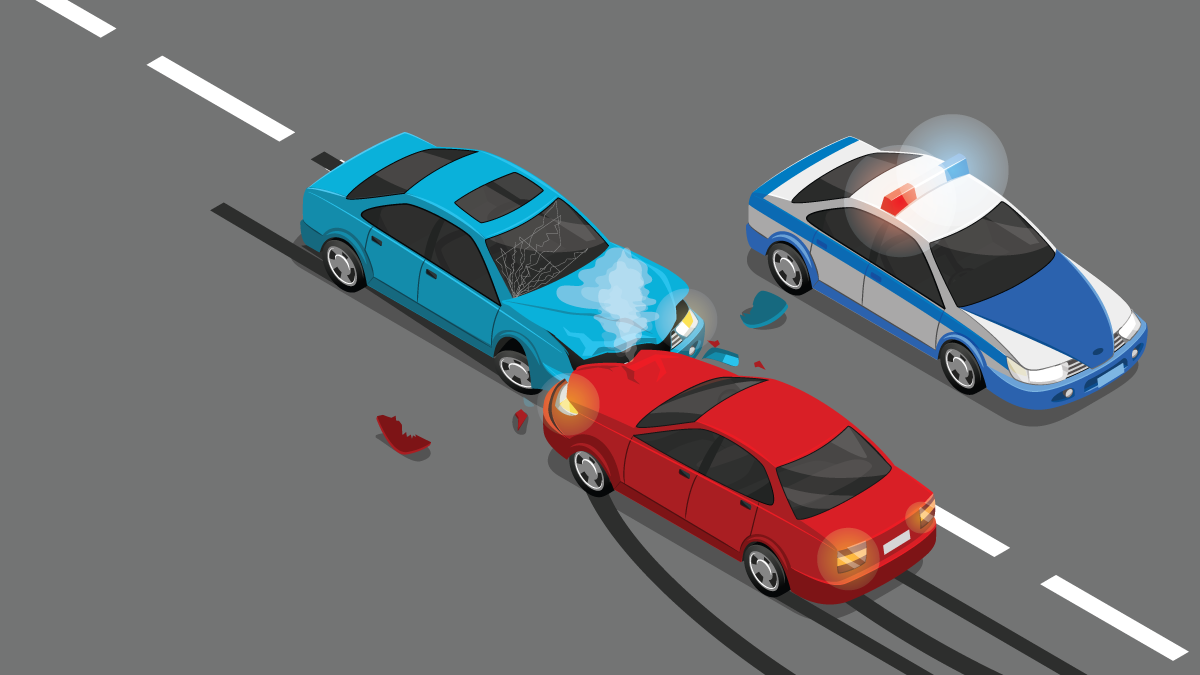
After car accidents, it becomes the insurance company’s responsibility to establish fault. In some cases, especially rear-end accidents, it’s clear whose fault it is. However, in other cases, it’s really hard to determine whose fault it was. Car accidents are usually very complicated to deal with; however, insurance companies can be a great help when it comes to assessing bodily and vehicle damage and establishing fault. We understand that getting into a car accident can be a very frustrating and overwhelming experience. This is why we are here to walk you through the entire process of establishing fault for a car accident.
The Fault Determination Process
Much goes into the process of determining fault after a car accident. Establishing the party at fault is not as easy as it seems. Each party involved in the crash must provide accurate documentation and information about how the accident happened. Each, if applicable, will provide medical bills and documents, images of their vehicle and the other party’s vehicle at the time of the accident, any witnesses that they have talked to, and more. An insurance company’s job is to assess all the physical and financial damages that occurred due to the accident and assess the situation accurately to find out exactly what happened. Once they have made a fair and viable decision or understood who caused or contributed to the accident, one or more insurance companies will cover a set amount of medical and repair expenses.
Insurance companies must also account for the percentage of fault, which makes the determination process even more challenging. Sometimes, they can find out that more than one driver was responsible for the accident. In that case, they can agree that one company has to cover, for instance, 80% of the damages, while the other claims 20%.
Unclear Faults
In cases where it is not clear who was responsible for the accident, insurance companies usually resort to witness claims. Most of the time, if both parties are responsible for the accident and neither wants to admit to fault, unknown witnesses can give clear and unbiased statements and help establish fault for the crash. The case is then solidified if more than one person agreed on the course of events that took place. Their contribution, especially when providing accurate details on why they think a specific driver was at fault, can make a huge difference in the case. Witnesses, along with evidence, are crucial when it comes to establishing fault in car accidents. If available, reviewing accessible footage can also significantly speed up the process. Any pictures of the vehicles, as well as the crash environment at the time, can also be of great help.
One of the best things to do right after the crash is to get the police involved. In some states like Philadelphia, this can help them gather statements on the spot, reducing the possibility that any vital details get lost or forgotten. Liability based on evidence can also be assessed on the spot in this situation. You can also check out a lawyer’s personal injury website to find out what you can do if you were severely injured. Evidence of physical injuries, paint on the car, and skid marks can help establish the party that was at fault.
Other Cases
Your insurance company’s ability to declare fault can be affected by the state in which you live. In some states, they may be allowed to determine faults to a certain extent. There are twelve states in which each party’s insurance company will have to cover their share of damages and injuries. These states are generally known as the “no-fault states” while other states, or “at-fault states,” demand that the liable party takes care of all the damages and injuries. Some states are also “pure contributory negligence.” This means that if you partly, or even slightly, contributed to the cause of the accident, you will not qualify to recover your losses. Your compensation can be reduced by the percentage of your contribution to the crash in “comparative fault states.”
Car accidents are among the worst experiences that anyone can go through. Besides the financial losses, most parties suffer from severe physical and mental conditions. From repair costs and medical bills to the lost income during the time spent in recovery, a car crash can be very time and financially draining. It can be a very frustrating experience, especially for those who weren’t responsible for the crash. Since we know how complicated and confusing this experience can be, we wanted to clarify how the fault determination process works.




